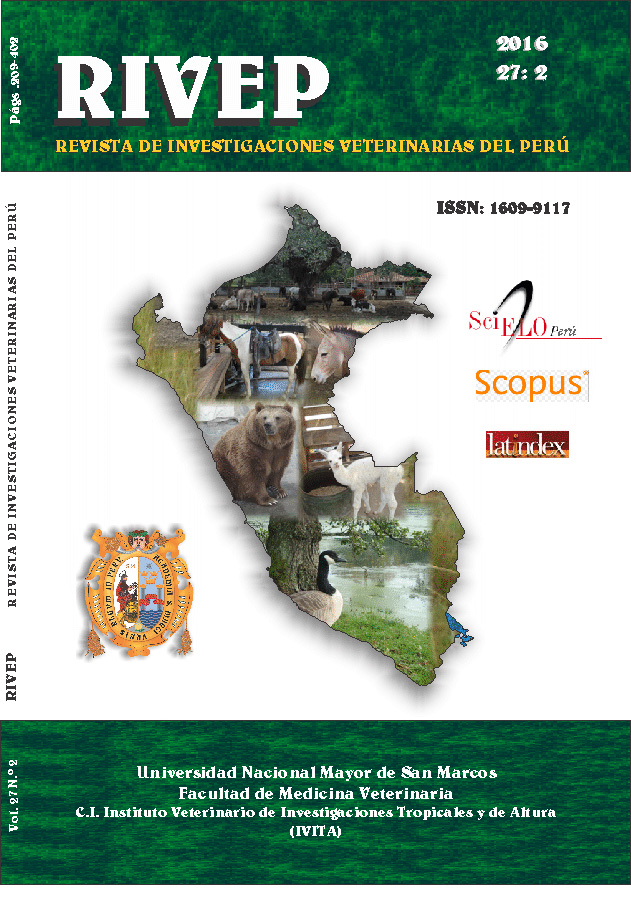Body weight and its effect on other morphometric characters in White Leghorn pullets l33
DOI:
https://doi.org/10.15381/rivep.v27i2.11659Keywords:
body weight, tarsus length, distance between pubic bones, distance from keel to pubis, White Leghorn L33Abstract
The aim of this study was to determine the effect of body weight on other morphometric characters in White Leghorn pullets L33. The study lasted for 6 weeks using 300 pullets (11-16 weeks old) equally distributed in two experimental groups: I: expected body weight (865.6 ± 13.3 g); II: overweighed (920.1 ± 37.3 g). Body weight, tarsus length and distances between pubic bones and from keel to pubis were determined weekly. The Mann-Whitney U test (p<0.05) was used to compare means between groups. Degree of uniformity in body weight in both groups was considered excellent (2.6 and 4.8% for group I and II, respectively). Significant difference between groups was observed in the tarsus length and distance from keel to pubis (p<0.0001), but not on the distance between pubic bones. Also, positive correlation between body weight and other morphometric variables was observed, although only 25.2% of the tarsus length was determined by body weight. It is concluded that body weight has a direct effect on tarsus length in White Leghorn pullets L33, which is potentiated in overweight birds.Downloads
Downloads
Published
Issue
Section
License
Copyright (c) 2016 Raiden Grandía G., Manuel Colas C., Julio Soroa R., Ángel Entrena G., Teresa Figueroa B., Ana Bada B., Susana Jáuregui C., Itamys García V., Miriam Burón R., Moraima Pérez G.

This work is licensed under a Creative Commons Attribution-NonCommercial-ShareAlike 4.0 International License.
AUTHORS RETAIN THEIR RIGHTS:
a. Authors retain their trade mark rights and patent, and also on any process or procedure described in the article.
b. Authors retain their right to share, copy, distribute, perform and publicly communicate their article (eg, to place their article in an institutional repository or publish it in a book), with an acknowledgment of its initial publication in the Revista de Investigaciones Veterinarias del Perú (RIVEP).
c. Authors retain theirs right to make a subsequent publication of their work, to use the article or any part thereof (eg a compilation of his papers, lecture notes, thesis, or a book), always indicating the source of publication (the originator of the work, journal, volume, number and date).










